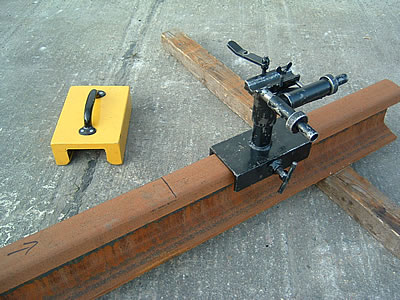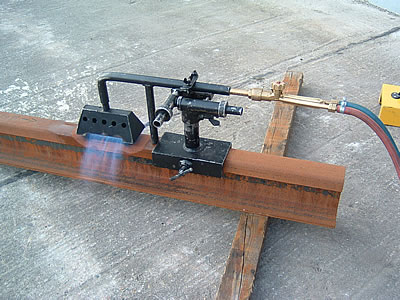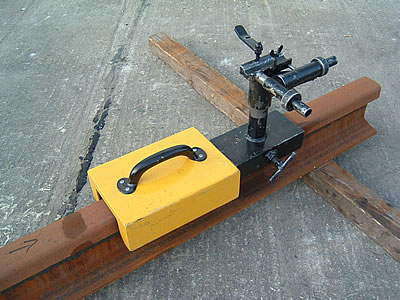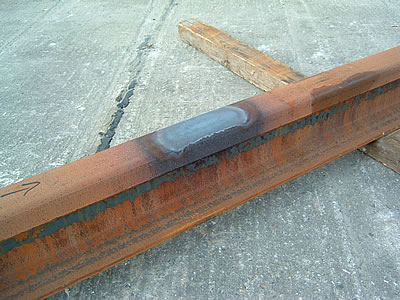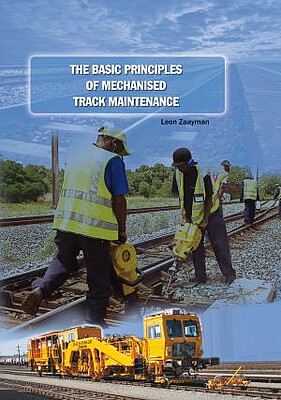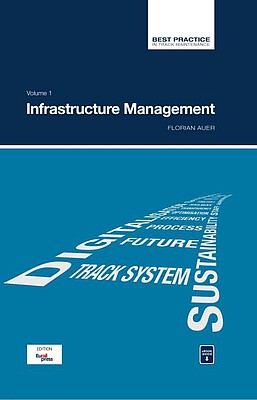Isothermal annealing
To produce a hardened insulated joint on the shining surface of the rail head, the heat treatment must be done before the rail is cut by a rail grinder. The other operations, such as drilling and the cleaning of the rail web surfaces or insides of head and foot, must always be carried out after the rail head has been heat treated.
To achieve a running surface and running edge that is highly wear resistant a fine grained perlitic structure is produced in the rail head. The heat is supplied to the rail with a long burner (1.5 bar propane and 5.0 bar oxygen) which is fitted in a so-called burner holder.
Heat is always supplied perpendicular to the rail head so that uniform heating of the rail head is provided in the area of rail to be hardened and tempered. The heating (austenitising) of the rail is done at 800 - 970°C.
It is very important to ensure that the flame burns symmetrically on both sides of the rail head and the distance between the burner and the upper side of the rail head is exactly 15 mm, so that a precise location of the burner over the rail is guaranteed and there is no melting of the rail head.
The rail head should be heated for exactly 60 seconds, after which the cover should be put for exactly 2 minutes on the place of the rail head which is being hardened and tempered.
The rail must be allowed to cool without constraint in stationary ambient air. Then the rail should be allowed to cool slowly in a natural way and the cut should then be made after 20 minutes. If it is raining the heated place should be covered.
You can find suitable specialist literature to the topic here:
The Basic Principles of Mechanised Track Maintenance
This book is dedicated to the many people involved in the day to day planning and performance of track maintenance activities. Providing a practical approach to everyday challenges in mechanised track maintenance, it is not just intended as a theoretical approach to the track system.
Railways aim at transporting people and freight safely, rapidly, regularly, comfortably and on time from one place to another. This book is directed to track infrastructure departments contributing to the above objective by ensuring the track infrastructure’s reliability, availability, maintainability and safety – denoted by the acronym RAMS. Regular, effective and affordable track maintenance enable RAMS to be achieved.
Best Practice in Track Maintenance, Vol 1 - Infrastructure Management
Infrastructure Management Volume 1 looks at aspects of infrastructure management with particular reference to the single European railway area. Based on best-practice examples from Central Europe, measures for the targeted retrofitting and improvement of the infrastructure maintenance of the existing network are presented. In many cases, infrastructure operators are faced with a generational change, which accelerates the process. Modern information and communication technology can simplify the comprehension and presentation of complex contexts. Modified approaches to asset management and life-cycle management enable implementation of the "transparent permanent way" or the "railway 4.0".

